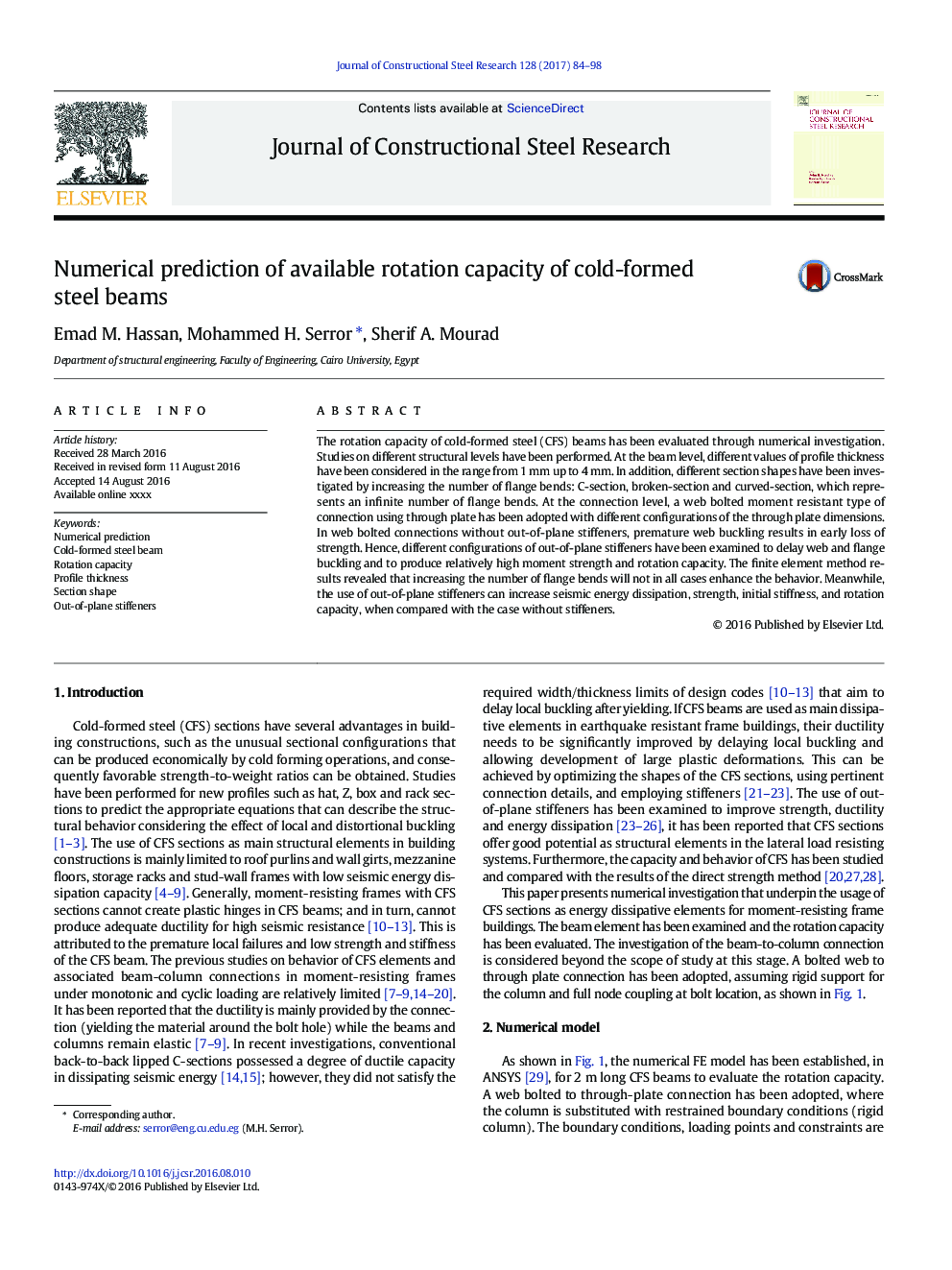| Article ID | Journal | Published Year | Pages | File Type |
|---|---|---|---|---|
| 4923579 | Journal of Constructional Steel Research | 2017 | 15 Pages |
Abstract
The rotation capacity of cold-formed steel (CFS) beams has been evaluated through numerical investigation. Studies on different structural levels have been performed. At the beam level, different values of profile thickness have been considered in the range from 1Â mm up to 4Â mm. In addition, different section shapes have been investigated by increasing the number of flange bends: C-section, broken-section and curved-section, which represents an infinite number of flange bends. At the connection level, a web bolted moment resistant type of connection using through plate has been adopted with different configurations of the through plate dimensions. In web bolted connections without out-of-plane stiffeners, premature web buckling results in early loss of strength. Hence, different configurations of out-of-plane stiffeners have been examined to delay web and flange buckling and to produce relatively high moment strength and rotation capacity. The finite element method results revealed that increasing the number of flange bends will not in all cases enhance the behavior. Meanwhile, the use of out-of-plane stiffeners can increase seismic energy dissipation, strength, initial stiffness, and rotation capacity, when compared with the case without stiffeners.
Related Topics
Physical Sciences and Engineering
Engineering
Civil and Structural Engineering
Authors
Emad M. Hassan, Mohammed H. Serror, Sherif A. Mourad,
